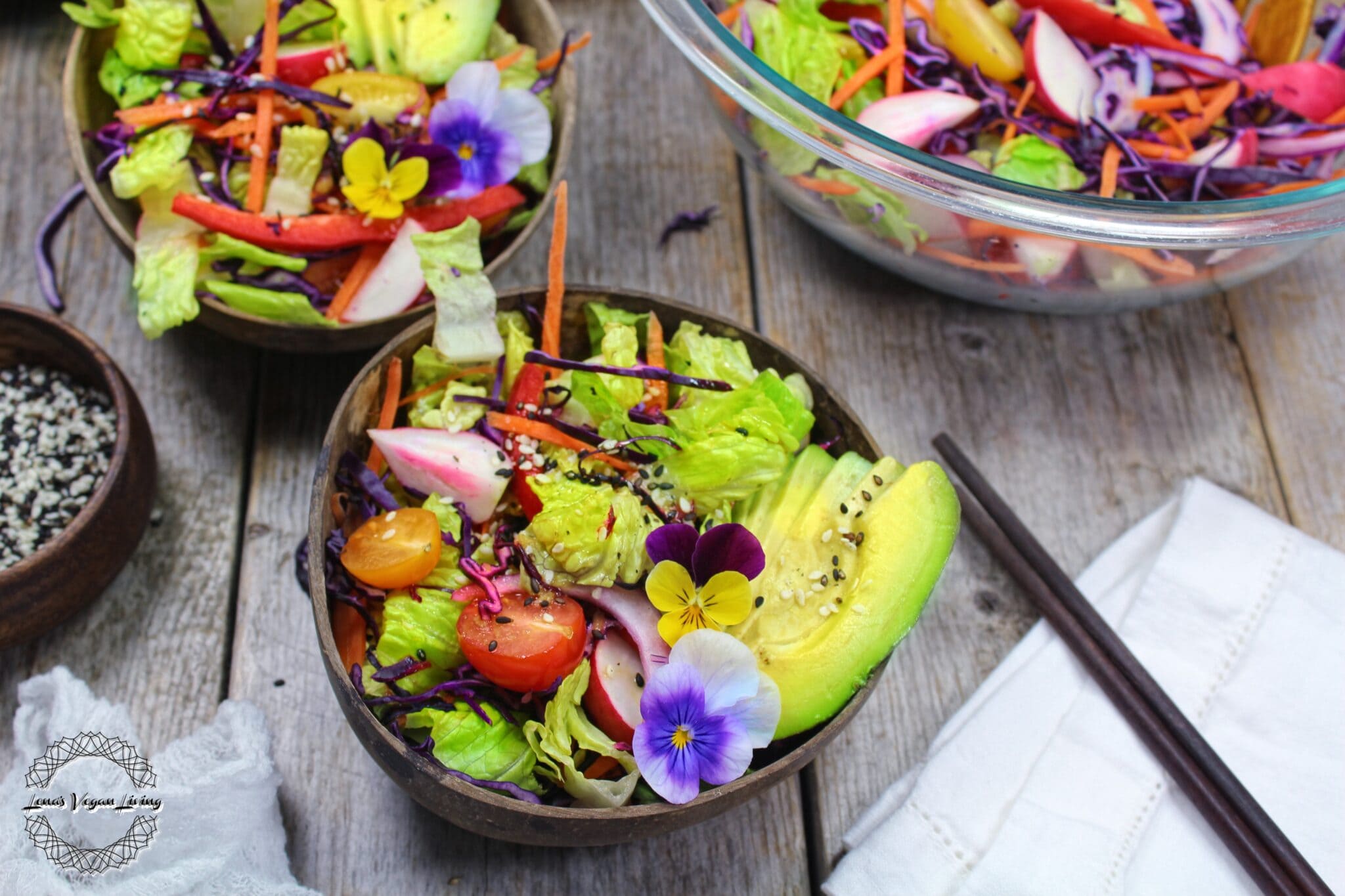For health-conscious individuals, salads are much more than just a side dish; they are an essential part of a balanced, nutrient-dense diet. This “Salad Lover’s Guide” aims to showcase how easy it is to create nutrient-packed bowls that promote a healthy lifestyle. From the freshest vegetables to wholesome grains, a well-crafted salad can be both satisfying and nourishing for your body.

Incorporating a variety of nutrient-rich ingredients into your salads is a great way to boost your health. Whether you’re looking for a post-workout meal or a light dinner, this “Salad Lover’s Guide” will help you assemble the perfect bowl to meet your dietary needs. It’s time to embrace the versatility of salads and discover how they can make a lasting impact on your well-being.
Building the Perfect Base
The Importance of Leafy Greens
Leafy greens serve as the foundation of any great salad. Spinach, kale, arugula, and lettuce are some of the best options for adding essential vitamins and minerals. By including these nutrient-packed greens in your bowl, you’re not only adding fiber but also antioxidants, which help fight free radicals in the body.
In addition to leafy greens, a variety of colorful vegetables can elevate your salad. Carrots, cucumbers, bell peppers, and tomatoes offer vibrant colors and an array of essential nutrients like vitamins A and C. This combination of greens and veggies in your “Salad Lover’s Guide” will ensure a wholesome base that promotes overall health and longevity.
Adding Protein for Sustained Energy
Plant-Based Proteins
To create a filling and balanced salad, it’s crucial to add a source of protein. For a plant-based option, try adding chickpeas, black beans, or tofu. These protein-rich ingredients will keep you full for longer while offering numerous health benefits, including improved muscle repair and immune function.
If you prefer animal-based proteins, grilled chicken, turkey, or boiled eggs can be excellent additions. These proteins are not only rich in nutrients but also help repair tissue and build muscle. When creating the perfect salad, balancing plant and animal-based proteins is key to ensuring that you’re meeting your daily nutritional needs.
Healthy Fats to Boost Nutrient Absorption
Avocados and Nuts
Adding healthy fats to your salad is essential for absorbing fat-soluble vitamins like vitamins A, D, E, and K. Avocados, for example, are packed with monounsaturated fats that support heart health. Additionally, nuts such as almonds, walnuts, and cashews provide a crunchy texture along with essential omega-3 fatty acids.
Incorporating olive oil into your salad is another way to include healthy fats. Rich in antioxidants, olive oil can promote cardiovascular health and reduce inflammation. Flaxseeds, chia seeds, and sunflower seeds are also great options for adding a nutritious boost to your salad while enhancing its flavor and texture.
Wholesome Grains for Added Fiber
Quinoa and Brown Rice
Whole grains are an excellent addition to any salad as they provide fiber, which supports digestion and helps maintain stable blood sugar levels. Quinoa, for instance, is a complete protein that contains all nine essential amino acids, while brown rice is a great source of magnesium and vitamin B. Including these grains in your salad is an easy way to increase its nutritional value.
Other grains like farro and barley are also fantastic choices for a nutrient-packed salad. These grains are high in fiber and minerals like iron and zinc, which support immune function and healthy skin. By incorporating a variety of whole grains, you’re ensuring that your “Salad Lover’s Guide” provides a well-rounded meal for both energy and nutrition.
Dressings
Homemade Dressings
While store-bought dressings can be convenient, they often contain excess sugar, preservatives, and unhealthy fats. Making your own dressing is an excellent way to control the ingredients and ensure that you’re adding only healthy, fresh flavors. A simple olive oil and lemon vinaigrette is both delicious and rich in heart-healthy fats.
For a creamy yet nutritious dressing, consider using Greek yogurt or avocado as your base. Greek yogurt is packed with probiotics, which aid in digestion, while avocado adds a smooth, rich texture to the dressing. These alternatives offer a healthy twist to traditional creamy dressings without sacrificing flavor.
Superfoods
Adding Berries and Spices
Superfoods are nutrient-dense ingredients that can elevate your salad’s health benefits. Berries like blueberries, strawberries, and raspberries are rich in antioxidants, which help combat oxidative stress and support a strong immune system. Additionally, adding spices like turmeric or ginger can enhance the flavor while providing anti-inflammatory properties.
For those looking to take their salad to the next level, consider adding superfoods like seaweed or spirulina. These ingredients are loaded with vitamins and minerals, including iodine, which supports thyroid health. By incorporating these powerful superfoods, you can make your “Salad Lover’s Guide” even more nutrient-packed and delicious.
Conclusion, Creating the perfect nutrient-packed salad is easier than ever with the variety of ingredients available today. By following this “Salad Lover’s Guide,” you can build bowls that are not only delicious but also packed with the essential nutrients your body needs for a healthy life. Whether you’re a vegan, vegetarian, or omnivore, these nutrient-dense salads can be customized to suit your dietary preferences while ensuring that you’re nourishing your body with every bite. So, get creative, experiment with different ingredients, and enjoy the health benefits of these flavorful, nutrient-packed bowls.